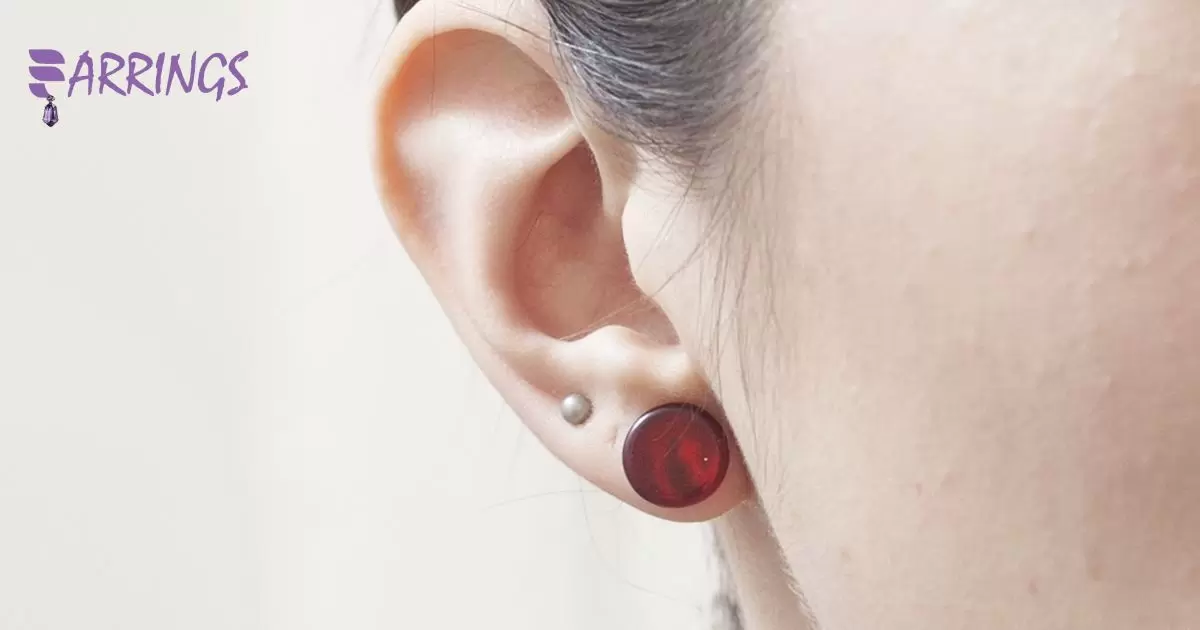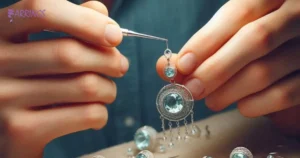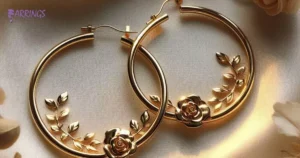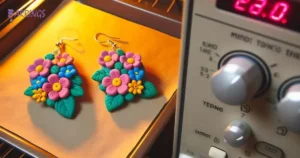Lobe earrings are pieces of jewelry that attach to the earlobe, the soft bottom part of the outer ear. Common styles pierce the earlobe or clip on using pressure, while others have hooks that slide over the lobe to hold them in place.
New earrings shine, tempting lobes barely healed from the last jewelry change. Patience preserves holes pierced through earlobe skin and cartilage. Wait three months after first studs and at least a month between jewelry swaps to avoid damaging stretches or irreparable rips of the delicate piercing.
Rushing to change jewelry risks tearing fragile holes in earlobes. Give piercings a few months before swapping studs. Then wait a month minimum between new earrings. Patience protects lobes for a lifetime of fashionable accessorizing.
Key Takeaways
- Wait 6-8 weeks to change lobe earrings after piercing.
- Opt for lightweight studs or small hoops for minimal irritation.
- Avoid heavy or dangling earrings during the healing process.
- Use hypoallergenic materials like titanium or surgical steel.
- Clean piercings twice daily with saline solution or gentle soap.
- Avoid rotating jewelry and keep hair products away to aid healing.
Healing Process Of Lobe Earrings
The healing process of lobe earrings depends on factors like piercing method and body’s healing speed. Standard piercings may need 6-8 weeks, while cartilage piercings might take 8-12 weeks or more. Wait until any pain or redness subsides before changing earrings, and always use clean, hypoallergenic options.
Factors Influence The Healing Time Of Lobe Earrings
Factors like piercing method and body’s healing speed affect the healing time of lobe earrings. Standard piercings typically heal in 6-8 weeks, while cartilage piercings may take 8-12 weeks or more. Wait for any pain or redness to subside before changing earrings and opt for clean, hypoallergenic options.
What Are The Signs That Your Lobe Earrings Have Healed?
In the healing process of lobe earrings, signs of healing include no pain or tenderness when touching the pierced area. The skin around the piercing should look normal without redness or swelling. Your earrings should move easily without discomfort, indicating the hole has closed properly.
The Right Time To Change Lobe Earrings
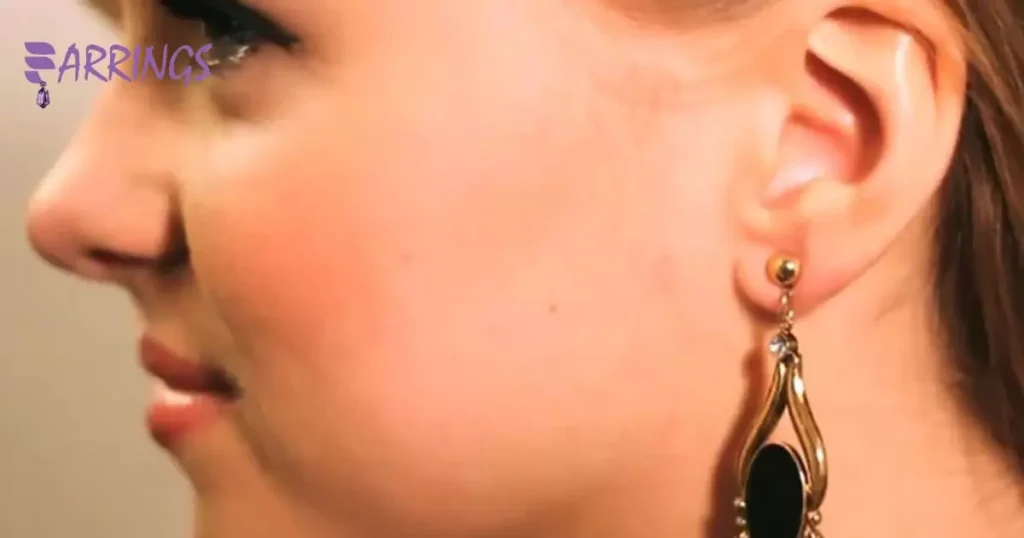
When it comes to changing lobe earrings, timing is key. Wait at least 6-8 weeks for standard piercings and longer for cartilage piercings. Your body’s healing process varies, so pay attention to any signs of discomfort.
Consult a professional if unsure, especially if you notice redness or discharge. When handling earrings, such as the delicate Gold Spiral Earrings, To wash your hands beforehand and opt for hypoallergenic materials to minimize irritation. Patience ensures healthy piercings.
Selecting Your Next Lobe Earrings
When choosing your next lobe earrings, consider your style and preferences. Look for earrings that match your personality and complement your wardrobe.
Opt for hypoallergenic materials like surgical stainless steel or titanium to reduce the risk of irritation. Avoid earrings that are too heavy or large, as they can stretch your piercing and cause discomfort.
What Should You Consider When Choosing New Lobe Earrings?
When choosing new lobe earrings, consider the size. Smaller earrings are typically more comfortable for everyday wear. Think about the material too. Hypoallergenic options like titanium or surgical steel are ideal for sensitive ears.
Another factor to consider is the closure style. Studs with secure backings are great for active lifestyles. Finally, think about your personal style. Pick earrings that reflect your taste and complement your wardrobe.
The Quality Of Lobe Earrings Matter

When it comes to lobe earrings, quality counts. Cheap materials can irritate your ears. Choose hypoallergenic metals like sterling silver or gold. Your lobes will thank you for it.
Well-made earrings are less likely to cause infections. Look for earrings with smooth edges. They’ll be more comfortable to wear. Quality matters for happy lobes.
Style Of Lobe Earrings For A New Piercing
| Style of Lobe Earrings | Description |
| Studs or Small Hoops | Simple and recommended for new piercings to minimize discomfort and snagging. |
| Lightweight Materials | Opt for materials like titanium or surgical steel to reduce irritation and aid healing. |
| Hypoallergenic Options | Choose earrings that are hypoallergenic to prevent allergic reactions, especially for sensitive ears. |
| Secure Backings | Earrings with secure backings are ideal for active individuals, preventing them from easily falling out. |
| Reflect Personal Style | Select earrings that match your personal style and wardrobe to feel confident and comfortable with your choice. |
When it comes to new earlobe piercings, simplicity is key. Stick to studs or small hoops. They’re less likely to snag or get caught. Plus, they won’t weigh down your earlobes as they heal.
Avoid dangling or heavy earrings for now. They can irritate the piercing and slow down healing. Stick to lightweight, hypoallergenic materials like titanium or surgical steel. These minimize the risk of allergic reactions and infections.
Some Tips for Taking Care of Your New Piercings
- Clean your new piercings twice daily using saline solution or a gentle soap.
- Avoid rotating or twisting the jewelry to prevent disruption of the healing process.
- Keep hair products and cosmetics away from the piercing to prevent irritation.
- Refrain from swimming in pools, hot tubs, or bodies of water until the piercing is fully healed to prevent infection.
- Watch out for signs of infection such as redness, swelling, or discharge, and seek medical advice if needed.
- Be patient and avoid changing your earrings until your piercings are fully healed to avoid complications.
Different Types of Piercings You Can Get on Your Ears
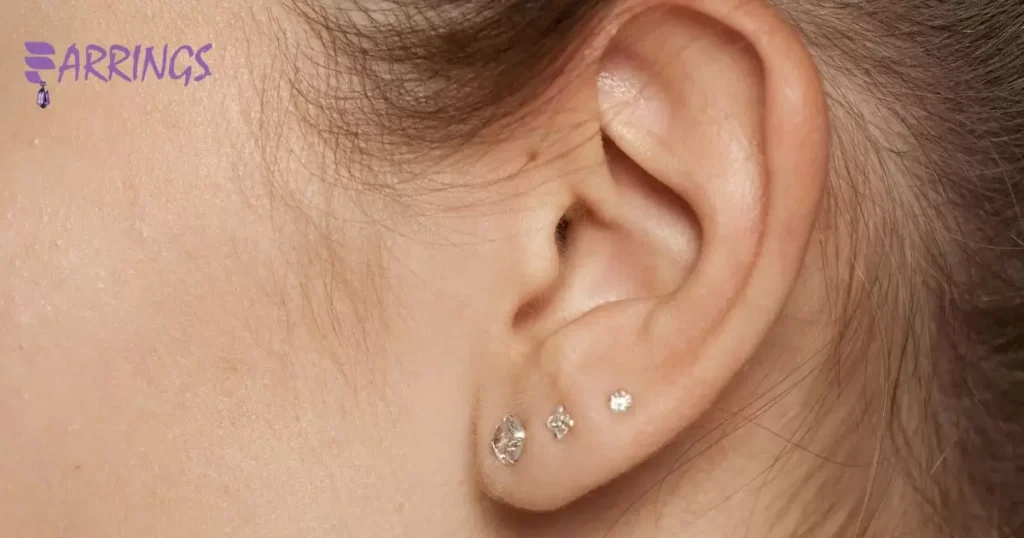
There are numerous types of ear piercings, each with its own unique placement and aesthetic. Here are some common ones:
Lobe Piercing: This is the most traditional and common type of ear piercing. It’s done on the fleshy, lower part of the earlobe.
Helix Piercing: This piercing goes through the upper cartilage of the ear, typically on the outer rim. It can be single or multiple.
Forward Helix Piercing: This is similar to a helix piercing but is placed more towards the front of the ear, near the head.
Tragus Piercing: This piercing is located on the small flap of cartilage that partially covers the ear canal. It’s a popular choice for its unique placement.
Anti-Tragus Piercing: Opposite to the tragus, this piercing is placed on the small cartilage ridge above the earlobe.
Conch Piercing: There are two types: inner conch and outer conch. Inner conch piercings are done in the center of the ear’s cartilage. Outer conch piercings are located on the flat part of the ear cartilage, just above the earlobe.
Rook Piercing: This piercing passes through the anti-helix ridge above the ear canal. It’s usually placed where the cartilage forms a fold.
Daith Piercing: This piercing goes through the innermost fold of cartilage in the ear, above the ear canal. It has gained popularity for its unique and sometimes therapeutic appearance.
Snug Piercing: This piercing is located in the inner cartilage of the ear, along the antihelix, near the outer rim of the ear.
Industrial Piercing: Also known as scaffold or bar, this piercing involves two holes connected by a single barbell, typically placed diagonally across the upper ear.
Helix Orbital Piercing: Similar to an industrial piercing, but instead of a straight barbell, a circular barbell or captive bead ring is used to connect two helix piercings.
Ear Weaving: This is a creative style where multiple piercings are connected with chains, rings, or other jewelry to create intricate designs on the ear.
When considering a piercing, always consult with a professional piercer and ensure proper aftercare to prevent infections and promote healing.
Frequently Asked Questions
How do you tell if a piercing is healed?
You can tell a piercing is healed if there’s no pain, redness, swelling, or discharge, and the skin around the piercing feels firm and looks normal.
Does changing earrings for the first time hurt?
It might cause slight discomfort, but it’s usually not painful if done carefully and after the piercing has healed adequately.
How long do lobe piercings take to heal?
Lobe piercings typically take around 6 to 8 weeks to heal, but individual healing times may vary.
Conclusion
Ears require patience. New piercings need a few months for holes to heal. Preserve lobes by waiting before changing jewelry. Tears and bleeding signal irritation. Give three months before the first earring swap.
Tempting shine lures eyes to swap. Resist at first. Let time pass between new studs. Wait a full month minimum before rotations. Care for holes now to wear fashionable jewels for years. Planning prevents pained lobes and lost earrings.
